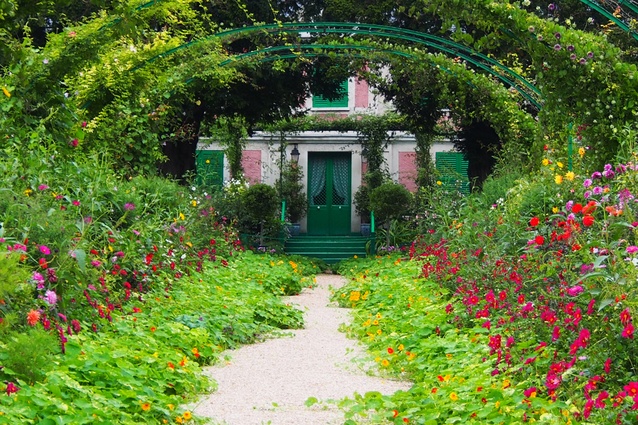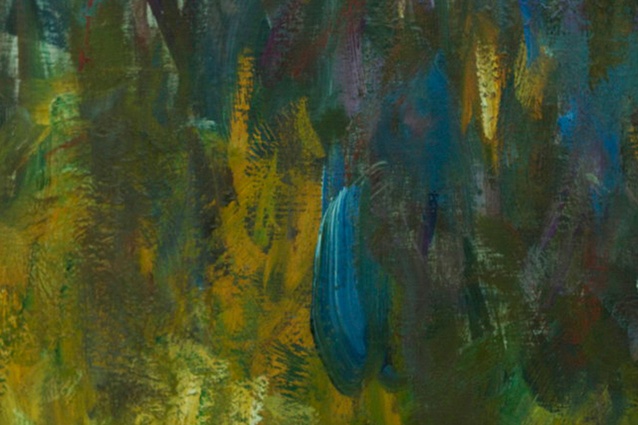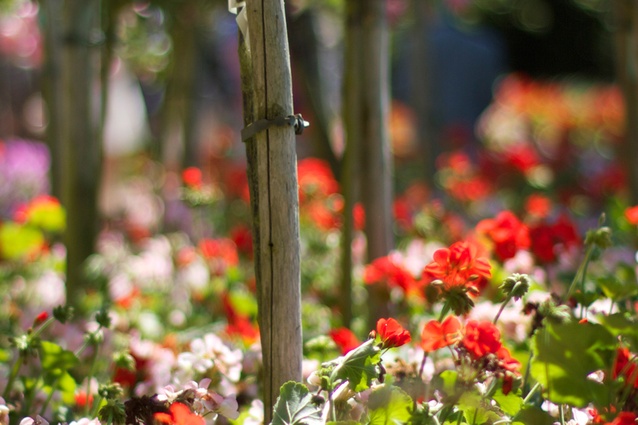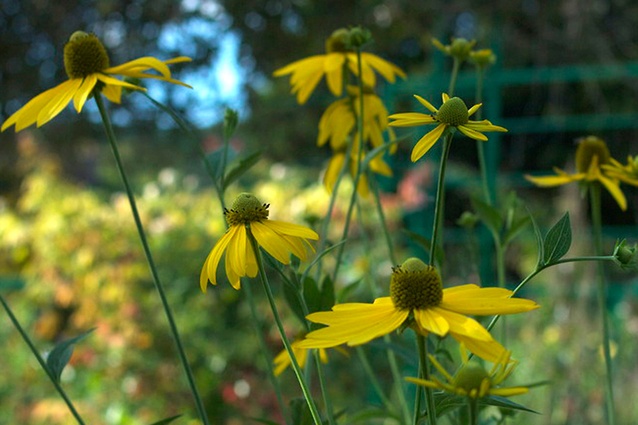The painted garden
There are some experiences in life that create such an impression they truly linger on the mind, gradually flourishing into something completely aside from the happening itself. Claude Monet’s gardens at Giverny in Normandy, France, can provoke this reaction. Known for the lily pond, bridge and the chaotic but composed paintings for which it was the subject, the garden also boasts another unforgettable section that is often left from the limelight.
This area, dubbed Clos Normand fronts the iconic homestead and studios, which Monet inhabited from 1883 until his death in 1926. Based on straight lines that lead away from the homestead and extend over the large grounds, it exhibits a wide selection of annual, perennial and climbing flowers. Across the one‐hectare plot, these are expressively yet sporadically married together for their colour and form, while being controlled by regimenting flowerbeds, lateral pathways and steel trellises. Despite these attempts of restraint, the result is a shock of flowering splendor.
Naturally, such a place attracts the masses and this, being the second most visited garden in France (after Versailles), plays host to a constant, if not overwhelming, thoroughfare of tourists. Opening with the European spring, the garden entertains over 500,000 people throughout its working year, which is on average 2040 visitors per day, or 240 per hour.
Monet once said: “The richness I achieve comes from nature, the source of my inspiration.” While not referring directly to Clos Normand or Giverny, these words offer an insight into the workings of his mind, and a clue to how the great painter treated his gardens. Monet’s outlook resulted in a horticultural diligence of such persistence that he is said to have made his family sleep in the greenhouse to keep the plants warm during heavy frosts. Even though this allowed the plants a vitality that expressed and nourished his artistic passion for color and light, the garden was the inspiration for painting, and not vice versa.
Looking at Monet’s paintings of Clos Normand, the overall composition of the artist’s original garden is surprisingly stagnant, relative to the abstracted nature of many of his works, and also to modern gardening trends. In fact, the garden’s design was conservatively in keeping with the mainstream French horticultural trends of the late 20th century, with strong linear lines, and blocks of monotone colours and species. As Monet was actively involved with French horticultural circles, it can be assumed his garden would have developed cyclically with these trends. Yet sadly, shortly after his death in 1926, the garden fell into complete disrepair, leaving only a handful of paintings and written accounts to tell tale of his intention for, and composition of, the original garden.
The establishment of the garden we know today began in the 1970s under the curation of Gerald van der Kamp and the gardening of Gilbert Vahe, with large areas of the new garden left to their interpretation, due to the lack of reference material (a process of unearthing continues to date with the aim of informing its contemporary management). Furthermore, behind the re-opening of the garden was the requirement to make it public, a move that further distanced it from the original Clos Normand.
With all this in mind, my arrival to the garden was undoubtedly tainted by wariness that its ostentatiousness and relentless thoroughfare would undermine any authenticity. This personal view is only of interest because upon arriving in Clos Normand I was unwittingly sold; it had depth, sincerity, and most surprisingly, it allowed for a personal, if not private experience.
At the core of my reaction was vitality, which being subjective is not often encountered in spaces founded on history. ‘Museum spaces’, if ideologically loyal to their origins, follow a design relative to the people of a particular era, making emotive reactions difficult to translate. What sets Clos Normand apart from this classification, and allows for its vitality, is that the lack of clarity in its origins makes it loyal to an idea rather than an actuality. With the influence of its initial re-interpretation, the 40-odd years of gardening under Giber Vahe that followed, and finally the last three under James Priest, I can only proffer my personal hunch as to what this idea is.
The main continuity throughout all versions of Clos Normand is the connection to Monet’s more abstracted impressionist paintings, and the concepts behind them. These paintings present the subject with strong colours and a lack of clear structural form, giving impetus instead to individual strokes. Ironically, these paintings were produced mainly in the ‘Japanese’ section of the garden, which being better documented is more in keeping with Monet’s designs as a subdued, less abstracted space.
Within Clos Normand, this reflection of Monet’s artwork is applied through an extremely high level of plant care; deadheading, plant replacement and manicuring are jobs taken seriously and exercised daily. These ‘perfect’ plants are grouped in small patches of single colours, with shades and species varying within the groupings. As with Monet’s painted strokes, this arrangement creates moments of vivid intention among an almost illegible overall composition. For the contemporary viewer, the key to translating this roughly hewn but purposeful experience of the garden is through its vitality. The clearer the vitality within the garden, the more legible the experience, and the more lasting and distinctive the memory.
It is here, in one’s memory where the garden can be enjoyed without the distractions of other people; where it can be appreciated again and again for its lingering beauty and splendor.
Memory itself is enforced by a strong, subjective impression of a space, something undeniably difficult to narrate from a designer’s outlook. In reaction to this, Clos Normand uses the compositional and technical mastery of Monet to clearly depict simple ideas such as a dawn-to-dusk spectrum of colours. In the context of today’s spatial experiences, which are often multi-functional, it is refreshing and emotionally powerful to have such focused singularity of experience. This impression allows the garden’s vitality to speak not of ostentatiousness but rather of a transient splendor, the moment, and your presence in it.
So I leave the narratives of this painted garden to you, and suggest only that it is in itself a catalyst and homage to your own interpretation.















